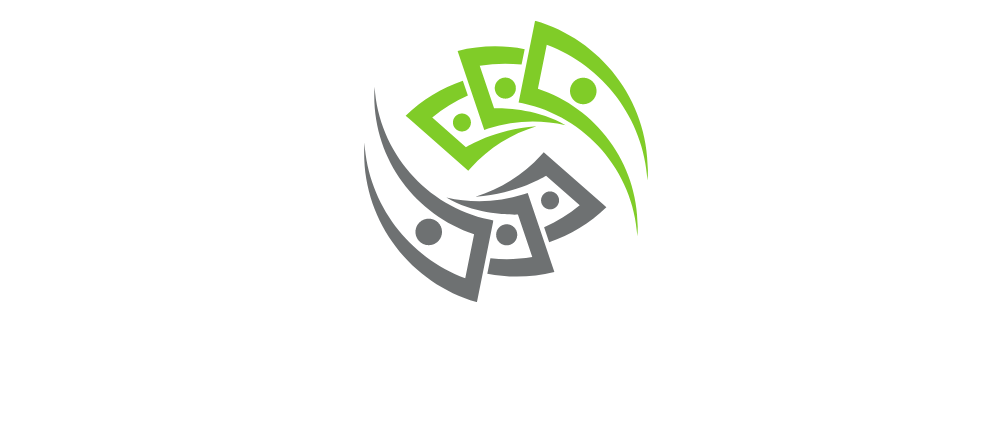Stablecoin Regulations: Navigating the Future of Digital Finance

Stablecoins have rapidly emerged as a pivotal force in the digital financial landscape transforming how you think about cryptocurrency and digital transactions. As these blockchain-backed assets promise price stability they’ve caught the attention of regulators worldwide who are now scrutinizing their potential economic impacts.
Your understanding of stablecoin regulations is crucial in navigating this evolving financial terrain. Governments and financial institutions are developing comprehensive frameworks to address the unique challenges posed by these digital currencies. From consumer protection to monetary policy implications these regulations aim to balance innovation with financial stability.
The regulatory approach to stablecoins varies significantly across different countries creating a complex global ecosystem. You’ll need to stay informed about the latest developments as policymakers continue to refine their strategies for managing these increasingly prevalent digital assets.
Key Takeaways
- Global Regulatory Landscape Emerging: Stablecoin regulations are rapidly developing worldwide, with different countries adopting unique approaches to oversight, balancing innovation with financial system protection
- Complex Classification Challenges: Regulators struggle to definitively categorize stablecoins, creating intricate legal frameworks that vary by jurisdiction and underlying asset mechanism
- Consumer Protection Priority: Regulatory bodies are focusing heavily on investor safeguards, mandating transparency, reserve verification, and robust compliance mechanisms for stablecoin platforms
- Technological Adaptation Required: Stablecoin issuers must develop advanced technological infrastructure to meet evolving regulatory requirements, including real-time monitoring and enhanced authentication protocols
- Market Transformation Ahead: Comprehensive regulations are expected to increase institutional adoption, optimize market liquidity, and create more predictable investment channels for digital assets
What Are Stablecoins?
Stablecoins are cryptocurrency tokens designed to maintain a consistent market value by linking to a reference asset. These digital currencies provide price stability through various backing mechanisms that mitigate the extreme volatility typical of traditional cryptocurrencies.
Types of Stablecoins
Stablecoins emerge in four primary categories:
- Fiat-Backed Stablecoins
- Directly pegged to national currencies like USD
- Examples: Tether (USDT), USD Coin (USDC)
- Maintain 1:1 reserve ratio with underlying currency
- Crypto-Collateralized Stablecoins
- Backed by other cryptocurrencies
- Over-collateralization prevents price fluctuations
- Example: DAI on Ethereum blockchain
- Algorithmic Stablecoins
- Use smart contract algorithms to manage supply
- No direct physical asset backing
- Dynamically adjust token volume to maintain price stability
- Commodity-Backed Stablecoins
- Linked to physical assets like gold or silver
- Provide alternative investment mechanism
- Examples: Paxos Gold (PAXG), Tether Gold (XAUT)
- Total market capitalization exceeds $150 billion
- Facilitate faster cross-border transactions
- Reduce transaction costs compared to traditional banking
- Provide liquidity in decentralized finance (DeFi) ecosystems
| Metric | Value |
|---|---|
| Global Stablecoin Volume | $7.4 trillion (2022) |
| Daily Transaction Count | 1.3 million |
| Adoption Rate | 25% annual growth |
Current Global Regulatory Landscape

Stablecoin regulations represent a complex and evolving global framework with significant variations across different jurisdictions. International financial authorities are actively developing comprehensive approaches to address the unique challenges posed by stablecoin technologies.
United States Regulatory Approach
The United States maintains a multi-agency regulatory strategy for stablecoins. The Securities and Exchange Commission (SEC) and the Commodity Futures Trading Commission (CFTC) play critical roles in oversight. Key regulatory considerations include:
- Financial compliance requirements for stablecoin issuers
- Consumer protection mechanisms
- Anti-money laundering (AML) protocols
- Mandatory reserve asset transparency
- Capital adequacy standards for stablecoin platforms
The Biden administration’s proposed regulatory framework emphasizes strict reporting obligations and risk management protocols for stablecoin providers. Federal agencies prioritize preventing potential systemic financial risks while promoting innovation.
European Union Perspectives
The European Union approaches stablecoin regulation through the Markets in Crypto-Assets (MiCA) regulatory framework. Primary regulatory elements include:
- Comprehensive digital asset classification
- Mandatory authorization for stablecoin issuers
- Enhanced consumer protection standards
- Strict capital requirements
- Comprehensive disclosure obligations
- Prohibition of interest payments on stablecoins
The European Central Bank (ECB) focuses on maintaining monetary stability and preventing potential financial system disruptions through proactive regulatory measures.
Asian Regulatory Frameworks
Asian countries demonstrate diverse approaches to stablecoin regulation:
- China: Strict prohibition of cryptocurrency and stablecoin transactions
- Japan: Comprehensive regulatory framework with detailed compliance requirements
- Singapore: Progressive regulatory environment supporting controlled digital asset innovation
- South Korea: Emerging regulatory guidelines emphasizing consumer protection
Regulatory approaches vary significantly across Asian markets, reflecting different economic priorities and technological perspectives on digital financial instruments.
Each jurisdiction’s regulatory strategy aims to balance innovation potential with robust financial system protection, creating a complex global landscape for stablecoin development and adoption.
Regulatory Challenges
Stablecoin regulations present a complex landscape of legal and financial challenges for governments worldwide. The evolving nature of these digital assets demands sophisticated regulatory approaches to mitigate potential financial risks.
Legal Classification Issues
Regulatory bodies struggle to definitively classify stablecoins within existing financial frameworks. The ambiguous nature of these digital assets creates significant challenges in determining their legal status. Financial regulators must address three primary classification challenges:
- Monetary instrument classification
- Securities regulatory requirements
- Payment system integration
Jurisdictions like the United States differentiate stablecoins based on their underlying collateral mechanism. Fiat-backed stablecoins receive different regulatory treatment compared to algorithmic or crypto-collateralized variants, creating complex legal distinctions.
Compliance Complexities
Stablecoin compliance involves intricate regulatory requirements across multiple domains. Financial institutions must navigate:
- Anti-money laundering (AML) protocols
- Know Your Customer (KYC) verification
- Cross-border transaction reporting
- Capital reserve authentication
European regulators like the European Central Bank mandate strict reporting mechanisms. These requirements ensure transparency and minimize potential systemic financial risks associated with stablecoin transactions.
Consumer Protection Concerns
Consumer protection represents a critical regulatory priority for stablecoin oversight. Key protective measures include:
- Mandatory reserve transparency
- Redemption guarantee mechanisms
- Investor risk disclosure protocols
- Fraud prevention frameworks
Regulatory bodies aim to establish comprehensive safeguards that protect individual investors from potential financial vulnerabilities inherent in emerging digital asset technologies.
The section strategically addresses the multifaceted regulatory challenges surrounding stablecoins, emphasizing the global effort to create robust, adaptable frameworks that balance innovation with financial system integrity.
Key Regulatory Proposals
Stablecoin regulations continue to evolve as government agencies develop comprehensive frameworks to address financial risks and technological innovations. The following key proposals from major regulatory bodies outline potential guidelines for stablecoin oversight.
SEC Potential Guidelines
The Securities and Exchange Commission (SEC) focuses on creating robust regulatory standards for stablecoin issuers. Key proposed guidelines include:
- Mandatory registration of stablecoin platforms with the SEC
- Comprehensive disclosure requirements for reserve backing
- Enhanced transparency of financial reserves
- Strict compliance mechanisms for investor protection
- Detailed reporting of transaction volumes and asset compositions
SEC proposals aim to classify stablecoins as potential securities, requiring issuers to meet rigorous financial reporting and risk management standards. These guidelines seek to mitigate systemic financial risks while promoting responsible innovation in digital asset markets.
Treasury Department Recommendations
The U.S. Treasury Department’s recommendations for stablecoin regulation emphasize:
- Implementing comprehensive risk management protocols
- Establishing minimum capital reserve requirements
- Developing robust anti-money laundering (AML) frameworks
- Creating standardized consumer protection mechanisms
- Ensuring interoperability between different stablecoin platforms
Treasury recommendations prioritize financial stability and consumer safeguards, proposing a structured approach to integrating stablecoins into the existing financial ecosystem.
International Regulatory Coordination
Global regulatory bodies are working to develop coordinated approaches to stablecoin oversight:
- Establishing cross-border compliance standards
- Sharing regulatory intelligence and best practices
- Creating unified frameworks for stablecoin classification
- Developing harmonized reporting requirements
- Implementing consistent consumer protection protocols
International coordination aims to address potential regulatory arbitrage and create a more consistent global approach to stablecoin regulation. Collaborative efforts between financial authorities seek to balance innovation with systemic risk management.
Impact on Cryptocurrency Ecosystem
Stablecoin regulations create significant ripples across the broader cryptocurrency landscape, fundamentally reshaping financial interactions and market dynamics. The evolving regulatory frameworks directly influence investor confidence, market stability, and technological innovation in digital finance.
Financial Market Implications
Stablecoin regulations transform cryptocurrency markets through comprehensive risk management strategies. Financial institutions experience profound shifts in digital asset integration:
- Market Liquidity: Regulations optimize stablecoin transaction transparency and reduce systemic financial risks
- Capital Flow: Enhanced compliance mechanisms create more predictable investment channels
- Institutional Adoption: Clear regulatory guidelines encourage traditional financial entities to explore cryptocurrency platforms
- Risk Mitigation: Structured oversight prevents potential market manipulation and fraudulent activities
Regulatory frameworks establish critical boundaries that balance innovation with financial system protection. Compliance requirements force stablecoin issuers to maintain robust reserve mechanisms, ensuring greater market stability and investor trust.
Investor Protection Strategies
Investor safeguards emerge as a central focus in stablecoin regulatory approaches:
- Mandatory Disclosure: Stablecoin issuers must provide comprehensive financial reporting
- Reserve Verification: Regular audits ensure full collateralization of digital assets
- Consumer Authentication: Enhanced Know Your Customer (KYC) protocols prevent unauthorized transactions
- Dispute Resolution: Clear mechanisms for addressing investor complaints and potential financial losses
Advanced regulatory strategies prioritize transparency and accountability. Investors gain increased confidence through structured oversight that reduces potential vulnerabilities in digital asset ecosystems.
The implementation of targeted investor protection measures creates a more secure environment for cryptocurrency participation, bridging traditional financial safety standards with emerging digital asset technologies.
Future of Stablecoin Governance
Stablecoin governance continues to evolve as regulatory bodies develop more sophisticated approaches to digital asset management. The future landscape will be characterized by increasingly nuanced regulatory frameworks that balance innovation with financial system protection.
Emerging Regulatory Trends
Global regulatory bodies are converging on comprehensive stablecoin oversight strategies. Key trends indicate a shift towards:
- Standardized compliance mechanisms that create uniform reporting requirements
- Enhanced transparency protocols for stablecoin issuers
- Integrated risk management frameworks across international jurisdictions
The European Union’s Markets in Crypto-Assets (MiCA) framework exemplifies this trend. Its approach mandates:
- Mandatory authorization for stablecoin issuers
- Strict capital reserve requirements
- Comprehensive consumer protection measures
Technological Adaptation Requirements
Technological infrastructure must rapidly transform to meet emerging regulatory standards. Stablecoin platforms will need to implement:
- Advanced cryptographic verification systems
- Real-time transaction monitoring capabilities
- Sophisticated Know Your Customer (KYC) authentication protocols
Blockchain technologies must integrate:
- Automated compliance reporting mechanisms
- Secure multi-layered encryption techniques
- Scalable infrastructure supporting rapid regulatory updates
Regulatory technology (RegTech) solutions will play a critical role in helping stablecoin platforms maintain compliance while preserving technological innovation. Financial institutions must invest in adaptive technological ecosystems that can quickly respond to evolving regulatory landscapes.
Conclusion
Stablecoin regulations are rapidly evolving as governments worldwide seek to balance innovation with financial stability. You’ll find that these emerging frameworks are crucial for protecting investors and maintaining the integrity of digital financial systems.
As the landscape continues to change you can expect more comprehensive and nuanced regulatory approaches. Your understanding of these developments will be key to navigating the complex world of digital assets effectively.
The future of stablecoins hinges on successful collaboration between regulators technology providers and financial institutions. You’ll want to stay informed and adaptable as this dynamic sector continues to mature and transform global financial interactions.
Frequently Asked Questions
What are stablecoins?
Stablecoins are cryptocurrency tokens designed to maintain a consistent market value by linking to a reference asset like fiat currency, commodities, or other cryptocurrencies. Unlike traditional cryptocurrencies that experience high volatility, stablecoins aim to provide price stability, making them useful for digital transactions, cross-border payments, and decentralized finance (DeFi) applications.
How do stablecoins maintain their value?
Stablecoins maintain value through different mechanisms: fiat-backed coins hold reserves of traditional currency, crypto-collateralized coins use cryptocurrency as collateral, algorithmic stablecoins use smart contracts to manage supply and demand, and commodity-backed coins are linked to physical assets like gold. Each approach ensures price stability through systematic backing and algorithmic management.
What are the main types of stablecoins?
The four primary types of stablecoins are: fiat-backed (like Tether and USD Coin), which are directly linked to traditional currencies; crypto-collateralized (like DAI), backed by other cryptocurrencies; algorithmic stablecoins that use smart contracts to manage price; and commodity-backed stablecoins (like Paxos Gold), which are linked to physical assets such as precious metals.
How are stablecoins regulated globally?
Global stablecoin regulation varies significantly. The United States employs a multi-agency approach involving SEC and CFTC, focusing on financial compliance and consumer protection. The European Union uses the MiCA framework with strict authorization requirements. Asian countries have diverse approaches, from China’s prohibition to Singapore’s progressive regulatory environment, all aimed at balancing innovation with financial system protection.
What challenges do stablecoin regulations face?
Regulatory challenges include classifying stablecoins within existing financial frameworks, implementing robust anti-money laundering (AML) protocols, ensuring Know Your Customer (KYC) verification, and establishing cross-border transaction reporting. Key priorities include consumer protection, mandatory reserve transparency, fraud prevention, and creating unified international compliance standards.
What is the potential impact of stablecoin regulations?
Stablecoin regulations are expected to enhance market liquidity, increase investor confidence, and promote institutional adoption of cryptocurrency platforms. By implementing strict disclosure requirements, reserve verification, and clear dispute resolution mechanisms, regulators aim to create a more secure and transparent digital financial ecosystem.
How are technological advancements supporting stablecoin compliance?
Technological adaptation involves implementing advanced verification systems, real-time monitoring, robust KYC protocols, automated compliance reporting, and secure encryption techniques. These innovations help stablecoin platforms meet evolving regulatory standards while maintaining the innovative potential of digital financial technologies.
What is the future of stablecoin governance?
The future of stablecoin governance points towards standardized compliance mechanisms, enhanced transparency protocols, and integrated risk management frameworks. Emerging trends suggest more sophisticated regulatory approaches, such as the EU’s MiCA framework, which emphasizes strict authorization, capital reserves, and comprehensive consumer protection strategies.
